Chickens draw in several animals that could endanger our flock. Due to the loss of their habitat, they have made their way closer to our homes in search of food.
Some of these predators lurk in the shadows during the day, waiting for a stray bird to wander close. Or, like me, you may have lost all or a lot of your flock to a nocturnal predator.
I overestimated the strength of the chicken wire. Raccoons chewed straight through my 5-year-old chicken wire on one of my coup windows. Disaster ensued.
We usually don’t realize we have a problem until it’s too late. We’re left wondering what animal attacked our birds, how they got in, and what we can do to protect our flock in the future.
You may be having security issues at night when your birds should be locked away from danger. This may mean a problem with your chicken run or with the coup itself.
Or possibly letting the flock free range unsupervised is leaving your birds vulnerable. There’s probably a solution to your predator problem, whatever it may be.
Day and Night Predators and Key Identifiers
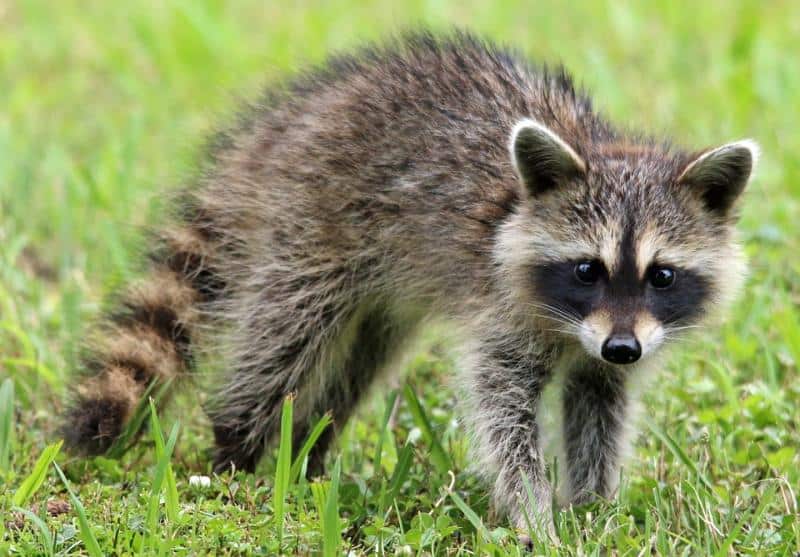
Raccoons
Raccoons can be attracted to your home because of open garbage cans, outside dog or cat food or if your chickens are laying eggs outside of the coup. Once they’ve made your property their home, they are unlikely to leave just because you lock down your garbage can or bring your pet’s food indoors. They will likely search out alternative sources of food, often turning towards your chickens and chicks.
They will attempt to make their way into your coup through weak points like unlocked doors, weak chicken wire, or holes. They may dig under your coup walls or dig into your chicken run to gain access to the coup. Once inside they will work together to stir up your flock to pick them off one by one.
You may notice half-eaten birds, birds near fences, or holes where the head was removed but the rest of the bird wouldn’t fit through. They may take whole birds or leave feathers scattered. Usually leaving behind signs of distress in the coup. They will also steal eggs and eat them near the coup, leaving shells.
Wild Cats
Bobcats and Lynx are predators that can take a whole chicken or two. They prefer to hunt in a wooded area, which can mean many rural houses or where homes back up to the woods. Bobcats are the most common wild cat in the U.S., but go unseen by many.
The lynx and the bobcat are both known to eat eggs. Either may leave no trace that it has been around your birds, other than having them go missing. But they may leave behind a carcass that they have tried to cover. If you have both Bobcats and lynx near you, the lynx track will appear bigger.
The Mountain Lion or Cougar may prey on your free-ranging chickens, but usually they prey on larger, free-ranging livestock. If they do decide to attack a flock, they may get many or all in one night. Like the bobcat and lynx, they may carry their prey away. Often carcasses are found covered in brush. You may notice bite marks with the teeth 2 inches apart.
Predatory Birds
Hawks, most commonly the Cooper’s Hawk, Red-Tailed Hawk, and Red-Shouldered Hawk, prey from above, and swoop in to get their targets.
They usually land on their prey and kill in that spot but may be able to pick up and carry off a small bird or bantam breeds.
An easy way to protect your chickens from hawks is by adding a rooster to your flock and also by building a strong coop and run.
Each hawk has its own environmental needs that may help you identify what birds is picking off your flock. The Cooper’s Hawk can fly through thick woods, while the Red-Tailed Hawk needs a more open space to prey. The Red-Shouldered Hawk stays near swamps or forests.
Unlike the Hawk, the Owl, will prey on your flock at night. Usually, your typical barn owl or screech is nothing to worry about, the Great Horned Owl is the one to look out for. They can live in virtually any habitat and can carry off an entire bird without a trace. They may occasionally take just the head.
Bears
In areas where bears are predominant, they may be considered a danger to your chickens. Most bears are attracted to trash cans and animal feed that may draw them closer to homes. If a bear decides to make your chickens their next meal, the coup will probably not provide much protection. They can easily break small chicken housing. They can grab the birds they want and may feed in a different area.
They will leave behind claw marks from a point of entry and on feed bins and most likely will leave tracks.
Foxes
The sly fox is a known danger to the chicken coup. A fox usually makes its home in a den that it has dug in the ground, sometimes in logs or hollow tree trunks. The fox’s ability to dig makes it a daytime and nighttime threat.
They can climb almost as well as a cat, making fences obsolete, and can dig their way into your coup or chicken run or find their way in through a small hole. They make stake out your coup for a time, planning their attack before they make a move.
If a fox makes its way into the coup, it may wipe out your flock in a single night. A fox in the hen house will leave little blood and will take away whole birds and eat the eggs, leaving behind the shells outside the coup. You may find birds the fox was not able to carry away with injuries to the neck and throat. A sure sign will be feathers in and outside of the coup.
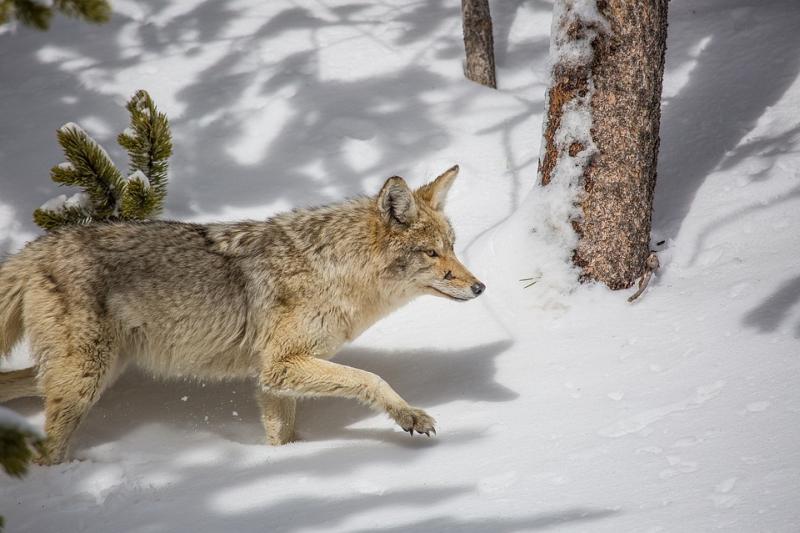
Coyotes and Wolves
Like dogs, the Coyote or the wolf may carry away whole birds in the night, leaving no other trace. They often hunt at night and in pairs. However, you may spot one out during daylight hours. Free-ranging birds are the most at risk as neither coyotes nor wolves prefer to enter a coup.
However, A coyote or wolf can dig its way into a chicken pen or may break in through a weak spot in a door. They may watch your coup for weeks before making their attack. If a wolf or coyote has attacked your coup, you may notice feathers scatters, some bird remainings left behind, and your entire flock wiped out.
Snakes
Snakes are generally not a danger to adult birds. Snakes want to eat something they can swallow hole. This makes eggs and small chicks their main target.
Weasels or Minks
The weasel may be small, but it is a pro predator. It uses its size to its advantage. Sneaking into small holes and spaces, even getting through chicken wire. The weasel does not hibernate and is active day and night, making it a constant worry.
If a weasel has been in your hen house you may notice dead birds with bites at the base of the scull. They may pile the birds or lay them neatly in a line. A mink may eat part of a bird or its intestines and move on. Sometimes birds are not eaten at all as they kill for fun.
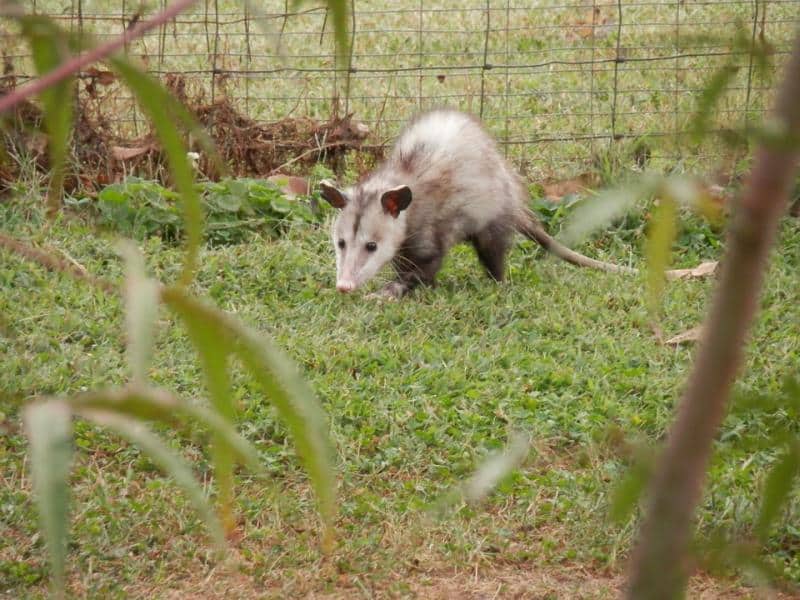
Skunks and Opossums
Both skunks and opossums may maul adult chickens. They each enjoy the eggs but the way they eat them will allow you to make a distinction. An egg eaten by a skunk will have a hole punched out of one end, similar looking to a hatched egg, sometimes carrying it out of the coup.
An opossum will crush and chomp and eggshell, leaving small pieces behind inside the coup. Both usually kill only one or two birds but may leave others mauled.
Domestic Pets
Domestic dogs can be a problem for a free-ranging chicken flock during the day. Some dogs won’t bother your flock and are trained as livestock guardians. Others will kill for fun and some may just chase your flock.
A dog can carry off a chicken without a trace, may leave birds dead but uneaten, or may leave birds wounded.
A domestic cat may attack your chickens. A housecat may take small birds away or prey on chicks. You may notice feathers scattered in another area if a cat is to blame.
Securing Your Coop
Try using a trail cam or even a baby monitor to keep an ear on your flock and to see what’s been stalking them. If you can identify the culprit behind a coup attack, you can find the point in your coup or run that may be lacking and fix it. Hopefully, this can prevent further loss of life and add some piece of mind. Keep in mind that even the most secure coup and run need to be maintained and checked frequently.
Doing a routine security check could have saved my chickens’ lives. Remember, prevention is the best way to deal with predators.
Walls and Roof
Ensure the coup that you build or the outbuilding that you are recycling is a safe and secure building. Your coup walls themselves could be a weak point. If you’re repurposing an old building, you’ll want to check for gaps and holes in the building itself, making repairs before you begin use.
I chose to line the inside of my hen house with plywood on the walls and floors to ensure there were no gaps. Any door needs to be double-latched or locked as raccoons can unlock simple latches.
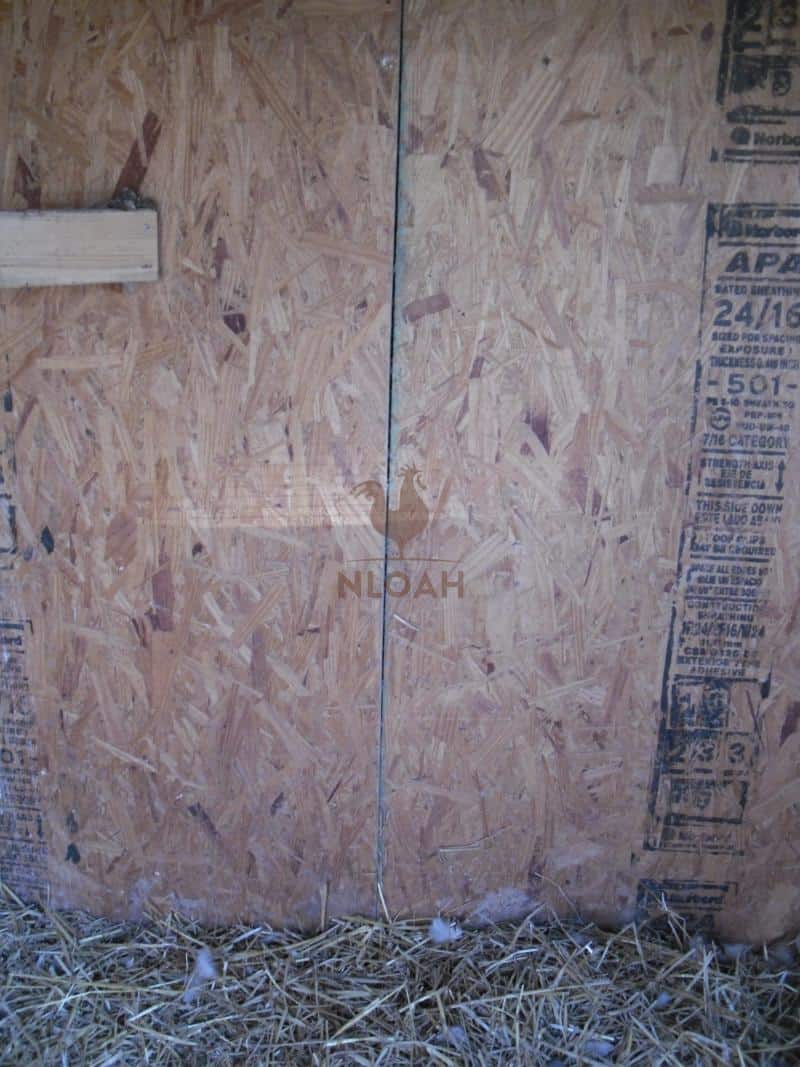
A roof should be weatherproof and predator-proof. Metal is often chosen but weather proofed wood can be sufficient. Check it often. Make sure that if you have gaps for upper ventilation that they are not too large or that they are covered with hardware cloth.
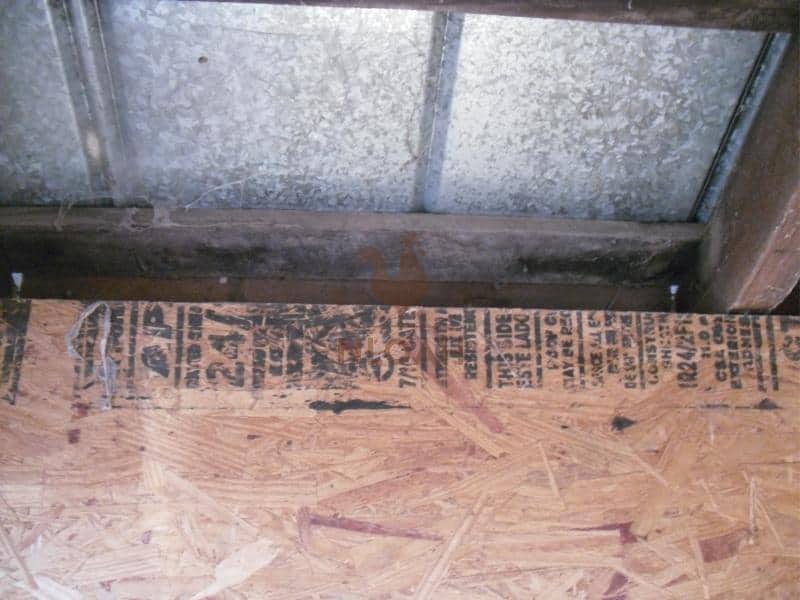
Floors
Many people opt for dirt floors, you’ll need to bury hardware cloth around the walls of your coup about 12 inches deep and add some going out away from the coup to keep predators from digging under. A thick wood floor is a great option to keep predators from digging into the coup itself. The best option is to have a coop with a floor that is raised at least a foot off the ground to prevent smaller animals, like skunks, snakes, or rats from burrowing under the coup.
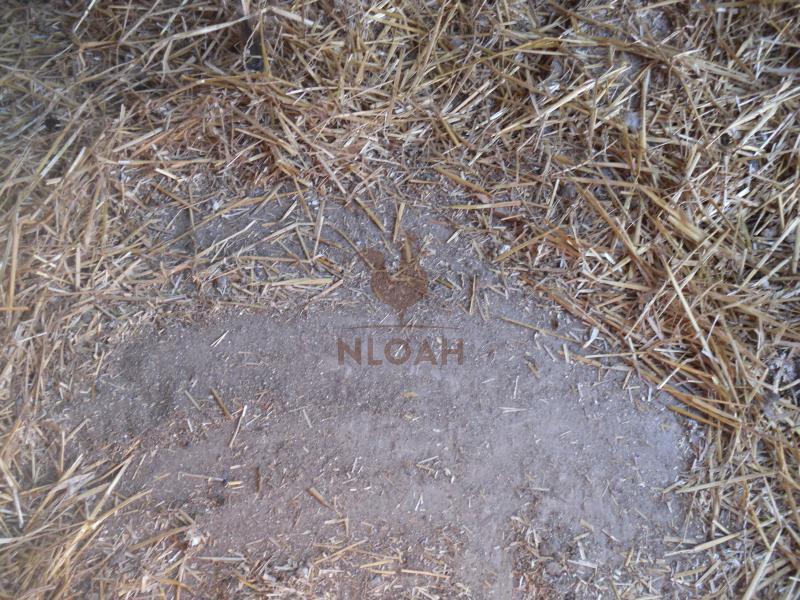
Windows
While windows are a great way to allow for proper ventilation, they must be secure. Where did I go wrong? I should have used thicker gaged fencing to cover my windows that I kept open during the summer nights.
The integrity of the chicken wire had also been compromised by the elements. The weak chicken wire was gnawed through, and as a result, I lost all my blue and white egg layers. Lesson learned. A thicker hardware cloth is now covering my coup windows.
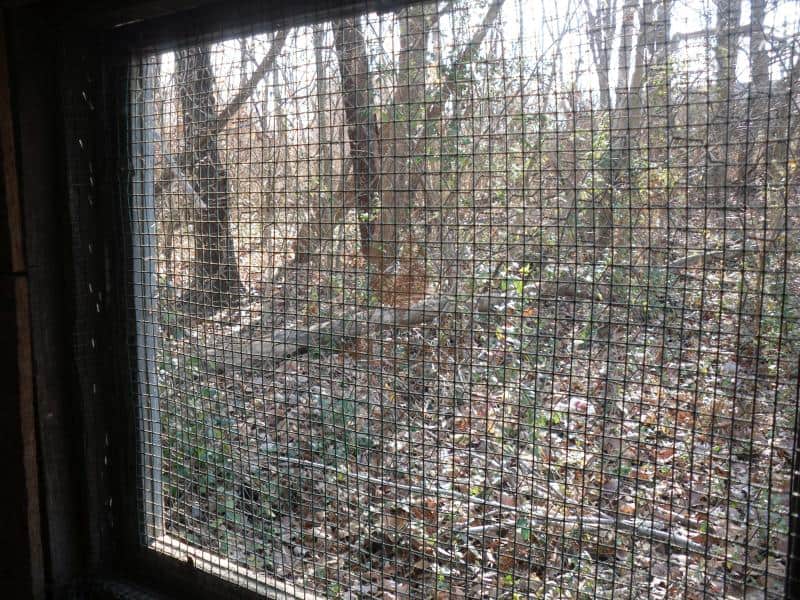
Ensuring A Safe Run
If you’re having issues with other daytime predators, like dogs, you may want to keep your chickens in a chicken yard or run unless they are supervised. The yard will give them a place to scratch, eat, exercise and rest all in a safely fenced-in and roofed area, but also allow them fresh air and sunlight out of the coup. You’ll have to periodically check your yard for weak spots as well.
Walls
Burying hardware cloth under the ground around the walls of the yard can also help prevent dogs, coons, foxes, and other predators from digging their way into your chicken run and gaining access to the coup. Make sure the walls are tall enough to keep jumping prey out, at least 4 feet tall.
Keep vegetation and brush away from the walls of the run and coup to help minimize camouflaging predators. They are less likely to put themselves out in the open to break into a coup than they are if they can hide in the trees and work their way in.
Roof
The run should be topped with aviary netting or wire across the top to prevent birds of prey from swooping in on your birds. You can choose to build a more proper roof out of lattice or wood if you have concerns about climbing predators like bobcats or raccoons.
Safely Free-Ranging
Free ranging is important for chickens. It allows for exercise, keeps them high in protein as they scavenge for bugs, mice, and moles, and provides a good quality of life. Free-ranging always has risks. There is no way to ensure that a stray dog, a lone owl, or a pair of foxes won’t happen upon your flock. To can however, take some steps to minimize the risk factors.
Train your birds to make their way back to the coup as the sun goes down. This could be a time for some mealworms or a hot dinner in the winter. Many predators hunt at dawn and at dusk, keep them safe and happy in their coup and preferably on their perch during the night hours.
Providing outlying fencing can help keep your chickens fairly contained while also keeping ground predators out. Many opt for electric fencing to “train” predators to stay away from the homestead or grazing areas.
Added supervision never hurts. Keeping your chickens in their coup and run when they have no supervision, but allowing them to free range when you have the time to keep an eye on them is the best of both worlds. Most predators are less likely to come close while humans are present.
Utilizing a trail cam in and around the coup and range area can also help you keep an eye on your birds, and allow you to see what may be testing the perimeters.
Flock guardians, such as the Great Pyrenees, donkeys, or even a llama can help take the load off you when it comes to security. If you choose a dog for livestock protection, make sure it’s trained properly and well-established with your birds before it’s left alone with them.
Keep an eye on how they react when they believe the flock is in danger as well. Just this year alone, 3 people living in my area have lost their protector dogs to packs of coyotes luring them away from their homes. Many livestock protection animals sleep with the chickens in the coup which will deter most predators away from your coup and keep you from worrying through the night.
Other Deterrents
Removing feed and treats from the coup and the run could help from attracting pest animals and predatory animals alike. A bear may not be interested in your hen house if it weren’t for the high protein feed he knows is inside.
Snakes and skunks may stay away if you check for eggs daily to ensure you’re not supplying them with a nightly meal. It will also help your bottom line, keeping feed from going to waste due to rodents in your feed or losing valuable eggs in the night.
Mirrors, CDs, or a disco ball could help reflect light and keep some predators away. Sensory alarms that make noise or turn on lights could help with more troublesome animals. Even keeping a battery-powered radio playing at night may mimic a human presence and keep them away.
If all else fails, you may have to resort to hunting and trapping. You’ll have to check your local laws to see if you’re allowed to hunt on your own property for pest animals.
If you plan to trap and relocate you’ll have to look up local laws as well. Some counties, like mine, keep tabs on the number of raccoons and other animals within their boundaries. Relocating animals outside of your county or city limits may be illegal.
In Summary
Losing some or all your birds to a predator is a difficult thing to accept. Chickens can take up a lot of time and hard work to plan for, not to mention the attachment many homesteaders have for their beloved egg layers. Once tragedy strikes you may want to throw in the towel, or you may be so enraged you want to go for a hunt that second.
Take some time to assess the situation and learn from your mistakes. Make sure you’re identifying the right culprit and take the appropriate steps to secure the environment, and keep predators from lurking in the future.
Have you had problems with a predatory animal? What did you do to solve the problem?
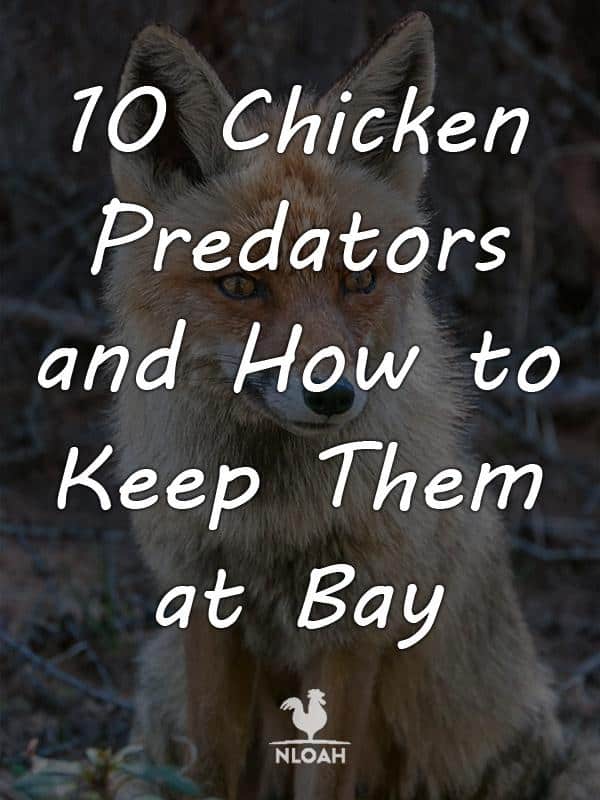

Paige is a writer with a background beginner homesteading, small scale self-sufficiency, and animal topics. Paige and her husband spend time away from work playing with their daughter, keeping their chickens from destroying the vegetable garden, and snuggling their 3 dogs and 2 cats.

Great article!! I have my first set of chicks growing up and about to be allowed out of the hen house. Have you ever tried a motion detection sprinkler to deter predators?
Thanks for the super-helpful information! Do you know if erecting camouflage or shade cloth, or something similar, over a chicken run area might help with aerial predators? Has anyone tried it?
I have helped a friend put a netting over her entire coop fence because of hawks. This was almost 2 years ago, so far, it has kept her fluffy butt girls safe
Thank you for this very useful post. And thank you for explaining each predator in such detail. It really helps figure out who the culprit is. We recently had a predator get all of our hens (4 total). We only found 2 bodies…the other 2 must have been carried off. The 2 that were left had their heads missing but the bodies were intact. Any idea which predator eats only the heads? There was no digging or claw marks and very little blood. Thanks again for this amazing article! 🙂
Laura,
Thank you, we are glad the post we useful! Sorry to hear about your poultry losses. I lost two ducks this week – hawks, I am figuring. Time to work on farm avoidance with them again, and its hard because birds of prey have protected status. Typically, a mink only eats the heads and leaves the body. Sometimes weasels, but they usually stack up the dead bodies before fleeing. Mink typically never travel far from the banks of a water source, ravine, pond, creek, or even a marshy ditch. Mink are so very hard to kill and once they find a food source they tend to stick around. Try trimming back any tall grass, underbrush etc. near the water sources on your homestead and around the coop, run, or free range area. Also, you can set mink traps – they are very small and can catch a dog or child foot -they don’t usually do much damage to a dog paw or a shoed foot, but that is not a given. We tend to use a small live trap with sardines as bait to catch mink – and it can take up to 3 weeks on average to catch just a few. They go into the shallow water on our pond and wait for the ducks to swim near – I hate mink more than any other predator because they are tricky, so hard to catch, and have killed so many of my small critters. Best of luck to you, please share how you battle with predators goes with our New Life On A Homestead Community.
Loved your post, very informative! Unfortunately in the past two weeks two of our birds have been killed by a fox-we believe. We’ve seen him numerous times on the property and the attack happens around the same time-7pm. Our ladies like to wonder out of the fenced in area I put them in midday so unless we are outside with them, we’ve now had to put them back in the coop/run around 6. My husband wants to relocate the fox but we’ll see what happens?
Dana,
Sorry to hear about your loss, as well. We recently dealt with a fox on our homestead. I am not a believer in the relocating predator concept. Either the predator finds its way back to the available food source or become a problem for someone else…your hubby sounds a lot nicer that I, lol. Dusk to dawn is the worst time for predator attacks. I always do put up of all of our free ranging small livestock a half hour or so before it starts to get dark. A smart predator learned my routine and started attacking just before I went down, but we caught and did not release him 🙂 I think what helps protect our free range flocks is that our goats also free range, we keep guineas as “guard dogs” and the horse roam nearly free range around the homestead. I hope you get rid of your fox one way or the other, best of luck to you!
Great post, thanks for sharing. We recently had a possum visit our chicken coop but luckily none of our ladies were injured. The lesson we learned? Tuck in the birds and lock up the coop as soon as they’re all inside at dusk. Super simple but very effective, haven’t had any problems since.
Carol,
We are glad you also enjoyed the post. You got really lucky with the possum. Some folks think they only steal eggs from coops, but they do also kill chickens. I do turn out around 7 a.m. and put up before dusk as well, to better protect them from the majority of predators we deal with – except those blasted hawks!